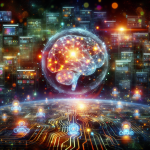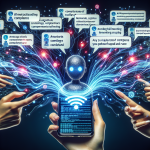Understanding Visual Storytelling in the Digital Age
In an age where attention spans are shrinking and information overload is the norm, visual storytelling has emerged as a powerful method to communicate messages effectively. Combining imagery, motion, and narrative, visual storytelling transcends language and connects directly with the viewer’s emotions. With the advent of artificial intelligence (AI), creators now have tools that dramatically enhance their storytelling capabilities.
The Role of AI in Enhancing Storytelling
AI is revolutionizing the storytelling landscape by enabling more personalized, data-driven, and visually compelling narratives. From automating tedious editing tasks to generating storyboards and even scripting, AI extends the creative boundaries of storytellers.
Here are some key areas where AI is contributing to visual storytelling:
- Image and Video Generation: Tools like DALL·E, Midjourney, and Runway ML empower creators to generate high-quality images and videos from text prompts, reducing the dependency on physical production.
- Scriptwriting and Dialogue Creation: Natural Language Processing (NLP) technologies such as ChatGPT assist in drafting compelling narratives, character dialogues, and descriptions.
- Automated Editing: AI can curate the best footage based on scene analysis, facial expressions, and emotional tone, accelerating the post-production process.
- Audience Insights: Machine learning algorithms analyze viewer data to suggest adjustments, improving engagement and resonance.
Creating Impactful Narratives with AI
The synergy between AI and storytelling lies in leveraging data and automation while preserving human creativity and intuition. For impactful narratives, creators must balance the emotional depth of visual storytelling with the computational precision of AI.
1. Start with a Strong Narrative Foundation
Even with the most advanced AI tools, a compelling story remains at the heart of any impactful visual piece. Define your audience, objectives, characters, and plot arc. Use AI tools to refine the story but not to replace the creative core.
2. Utilize AI for Visual Composition
AI-powered design platforms can generate mood boards, concept art, and even storyboards. These resources are invaluable for planning a cohesive visual style and ensuring narrative alignment throughout the project.
3. Leverage Emotion Recognition
AI systems can analyze images and video clips to detect emotional tones. Creators can use this feedback to adjust content and ensure that visuals align with the intended emotional journey of the story.
4. Optimize for Platforms
AI tools can tailor content formats for different channels—including social media, websites, and television—maximizing visibility and engagement. Automated cropping, closed-caption generation, and thumbnail selection are just a few ways AI enhances content adaptability.
Ethical Considerations in AI-Driven Storytelling
While AI presents exciting opportunities, it also raises ethical questions. Issues such as data privacy, bias in algorithms, and the authenticity of AI-generated visuals must be addressed to maintain viewer trust and creative integrity.
Creators should strive for transparency when using AI-generated content and ensure that final outputs reflect ethical storytelling standards.
The Future of Visual Storytelling with AI
As AI continues to evolve, its integration into visual storytelling will deepen. Expect more intuitive interfaces, real-time collaboration with virtual assistants, and even fully AI-produced content. However, the human touch in crafting emotive, meaningful stories will remain irreplaceable.
The key is to harness AI as a creative co-pilot, augmenting the storyteller’s vision rather than replacing it. In this way, visual storytelling with AI doesn’t just automate production—it expands the canvas of creative possibility.





